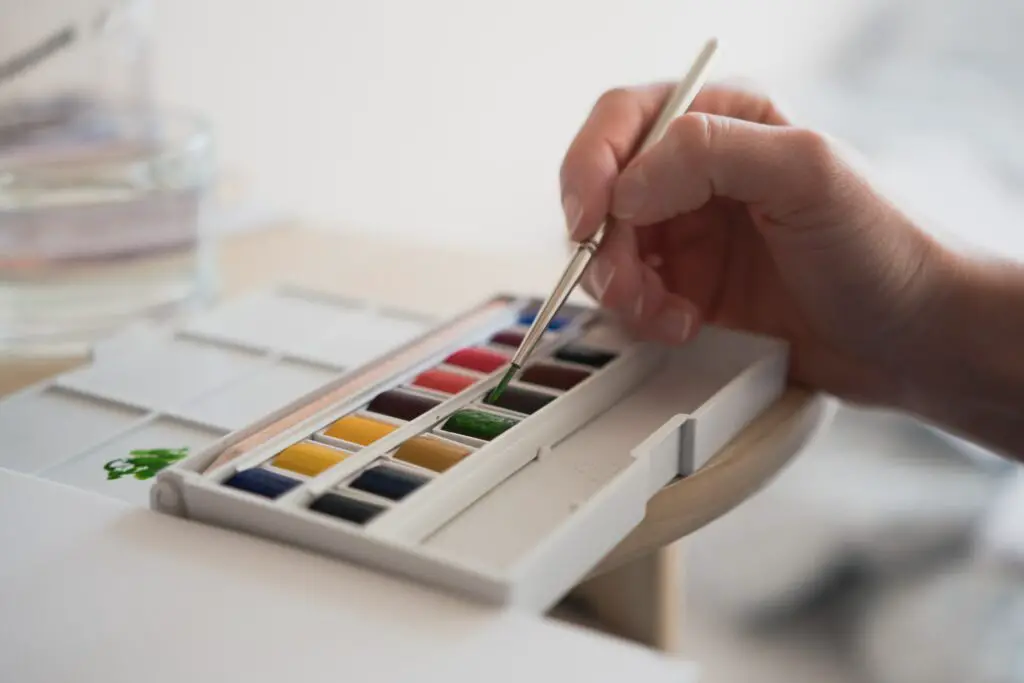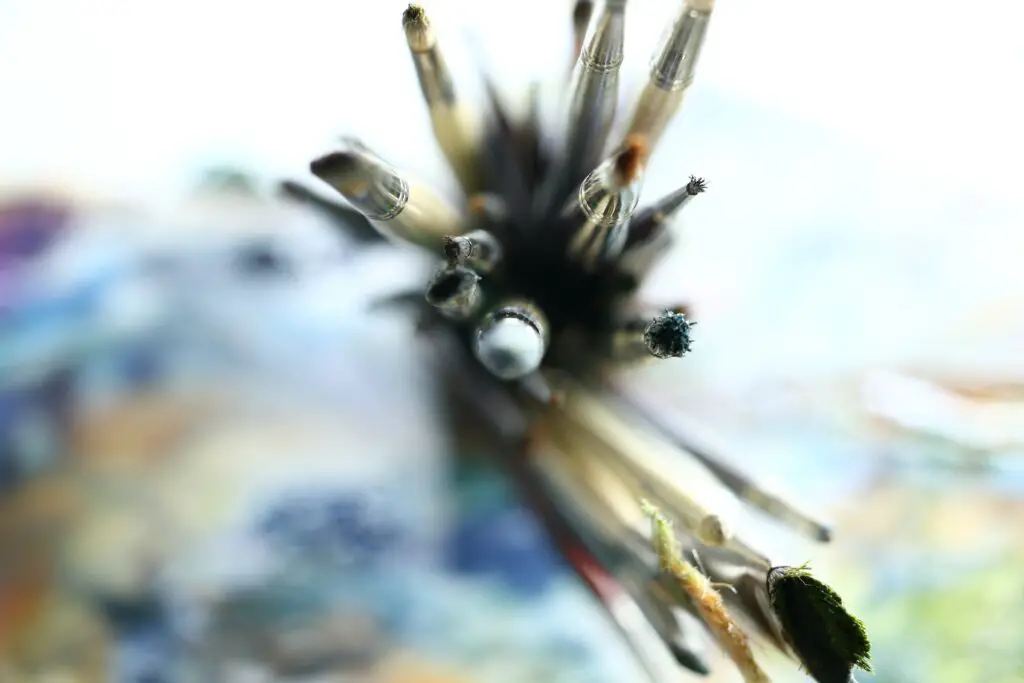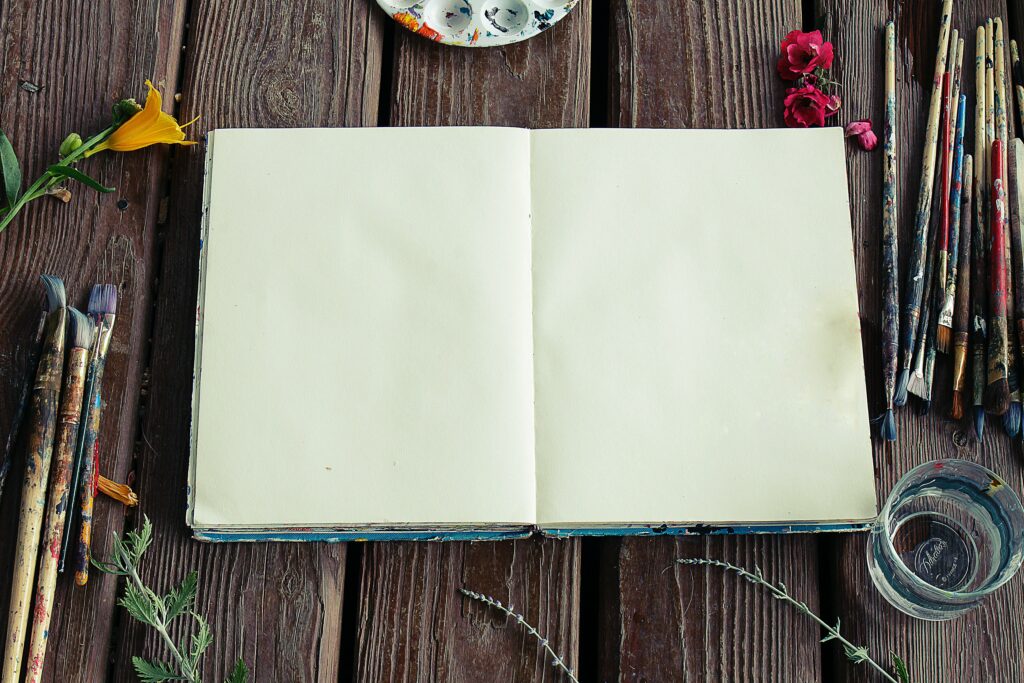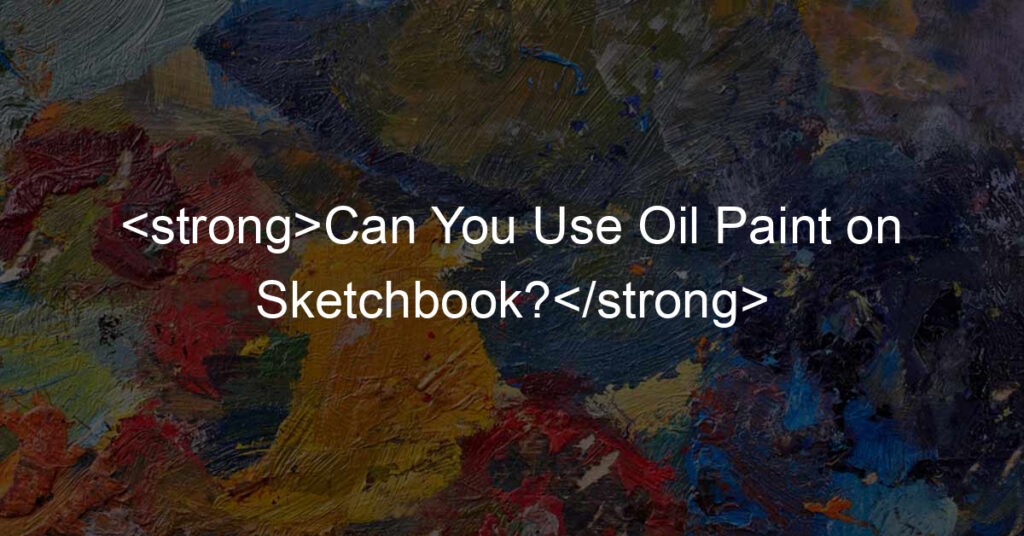The short answer is yes, oil paint can be used on sketchbook paper. Oil paint works best on heavier-weight papers with a smoother surface, and that includes some sketchbooks.
However, you should use caution when using oil paints on certain types of sketchbooks as they may react differently with the materials in the book.
It’s also important to make sure the paper has been prepared correctly before painting, as any oils or other products used during preparation could affect the quality of your work.
To help ensure success when using oil paints on your sketchbook paper, here are some tips:
- Use heavier-weight papers for best results
- Prepare the page by sanding lightly if necessary
- Prime or seal the page with gesso before painting
- Use a slower-drying oil paint such as linseed or walnut
- Make sure the paper can handle multiple layers of paint
- Test out a sample on the back of your sketchbook first to make sure it won’t damage the paper.
By following these tips and using caution when working with oil paints on sketchbooks, you’ll be able to achieve beautiful results.
With patience and practice, you’ll be able to create stunning pieces of art that will last a lifetime.
What Kind of Paper Is Used for Oil Painting?
The type of paper used for oil painting depends on the type of paint, the desired finish, and the artist’s preference.
Generally, a thicker, heavier-weight paper is recommended as it can better hold wet paint without warping or buckling.
Various papers are available that are suitable for oil paints including canvas boards, hot-pressed watercolor paper, illustration boards, and wooden panels.
You can also use oil-primed linen or cotton canvases if you prefer a more traditional look.
No matter what type of paper you decide to use, make sure it is properly prepared and primed before beginning your painting so that the oils from the paint won’t damage the form over time.
Once this step is complete, you’re ready to begin creating your masterpiece.
Good luck! Enjoy painting!
How Long Does Oil Paint Take To Dry on Paper?
The amount of time oil paint takes to dry on paper depends on a few factors.
The type of paint, how thickly it’s applied, the temperature and humidity in the room, as well as any additives used, can all influence drying times.
Generally speaking, oil paints take anywhere from 6-24 hours to dry depending on the conditions.
If you need your painting to dry faster, you can select a fast-drying oil paint such as a stand or alkyd oil. With these types of paints, you can expect accelerated drying times of up to 1 hour per layer.
As with many things related to art, patience is key when it comes to working with oil paints on paper.
Allowing your painting to dry thoroughly will ensure that the colors remain vibrant and that they will last for years to come.
How Do You Seal Oil Painting on Paper?

Once the painting has dried completely, you can seal it with a varnish. This will protect your artwork from dirt, dust, and other environmental factors that could damage or fade the colors over time.
To apply the varnish, use a soft brush to lightly coat the painting in even strokes.
Allow it to dry for several hours before applying a second layer if desired. After it is sealed, you can then frame your masterpiece and admire your work long into the future!
What Surfaces Are Best for Oil Painting?
Oil painting can be done on a variety of surfaces, including canvas, wood, paper, and metal.
The best surface for your project will depend on the type of artwork you are creating and the effect you are trying to achieve.
Canvas is often the preferred surface for many oil painters as it provides a durable base that won’t buckle or warp when exposed to wet paint.
Wood, paper, and metal surfaces can also work well with thinner layers of oil paints, but each material may react differently to different products. Hence, it’s important to do a test before beginning a larger piece.
No matter what surface you choose, make sure it is properly prepared before starting your project to get the best results possible.
Now that you know the basics of oil painting on sketchbooks and other surfaces, it’s time to get creative!
With practice and patience, you’ll be able to create beautiful pieces of art that will last a lifetime.
What are the benefits of painting on sketchbooks?
Painting on sketchbooks can be a great way for artists to practice and refine their craft. Not only are sketchbooks more affordable than canvas, but they also offer a range of benefits not found elsewhere.
Sketchbooks give artists the freedom to experiment without worrying about ruining expensive supplies, as well as allowing them to save their work and refer back to it later. For starters, painting on sketchbooks is much less intimidating than painting on larger canvases. With a blank sheet of paper, the size of the project is entirely up to the artist’s preference.
The smaller scale allows artists to concentrate on details that may otherwise get lost in a larger piece. Artists can incorporate watercolors, acrylics, pens, markers, and any other type of material they feel inspired by into their work. Sketchbooks also provide artists with an opportunity to take their artwork wherever they go.
Since most sketchbooks are lightweight and compact, they can easily be taken with you when traveling or just going out for the day. This makes it easier for artists to find inspiration while they are away from home or the studio and capture moments immediately in their artwork without having access to more substantial supplies.
Painting on sketchbooks offers endless possibilities for creative exploration at its finest – all within the comfort of one’s own space! It gives artists access to materials that may not always be available outside of a studio setting while still providing enough flexibility that experimentation feels safe and inviting rather than daunting or costly.
| Benefits of painting on sketchbooks |
|---|
| 1. Portable and convenient: Sketchbooks are typically small and easy to carry around, making them a great option for painting on-the-go. |
| 2. Experimentation: Sketchbooks are a great place to experiment with new techniques, colors, and materials without worrying about making mistakes. |
| 3. Record-keeping: A sketchbook can serve as a visual diary, allowing artists to record their thoughts and ideas through painting. |
| 4. Practice: Regular painting in a sketchbook can help artists improve their skills and develop their own style. |
| 5. Inspiration: Sketchbooks can be a great source of inspiration for future paintings or projects. |
| 6. Versatility: Sketchbooks can be used for a variety of painting media, such as watercolor, gouache, acrylic, and ink. |
Is there any special preparation needed before painting in a sketchbook with oil paint?
When it comes to painting in a sketchbook with oil paint, there is a certain amount of preparation necessary in order to ensure the best possible results. The first step is to make sure that the surface of the paper is suitable for oil painting. If not, an acrylic primer must be applied before any other work can begin.
After this has been taken care of, the next step is to choose the right type of paint for the project. Since oil paints have different properties than watercolors or acrylics, it’s important to select a paint that is specifically designed for use on paper.
Once you’ve selected your paint, you need to prepare it by thinning it out and mixing it with a solvent such as linseed or walnut oil before application. This will help ensure that your colors are even and consistent across each page.
How to determine the right amount of oil paint to use when using a sketchbook?

When painting in a sketchbook with oil paint, determining the right amount of paint to use is essential for achieving the best possible results. Generally speaking, it is recommended to start with about one teaspoon of paint for each page. This will provide enough cover for larger areas of color but still leaves room for details and smaller brush strokes.
However, if you are looking to create more precise lines and shapes, such as those found in detailed portraiture or landscapes, then a little bit less paint may be necessary. In this case, opt for around half a teaspoon on each page as this will give you just enough coverage without sacrificing too much detail or vibrancy.
How do you protect an oil painting in a sketchbook?
- Invest in a Quality Sketchbook – Choose one that is acid-free and has thick pages, as this will help protect your artwork from fading over time.
- Use Archival Quality Materials – Make sure to use archival quality paints, brushes, and other supplies when creating your oil painting so it lasts longer.
- Apply a Final Layer of Varnish – Once you’re done with the painting, apply a layer of varnish or another sealant to further protect it from dust and moisture damage.
- Store Your Artwork Properly – Keep your sketchbook stored in an area away from direct sunlight or extreme temperatures to prevent fading or warping of the paper over time.
- Frame Your Painting for Added Protection– Consider framing your finished piece in order to provide additional protection against wear and tear over time while also displaying it beautifully on any wall!
- Utilize Specialized Storage Solutions – If you don’t want to frame your artwork consider using specialized storage solutions such as portfolios, boxes, sleeves, and bags designed specifically for art pieces like oil paintings in sketchbooks!
These can help keep everything safe without taking up too much space at home or the studio.
What are the disadvantages of a sketchbook?

One of the main disadvantages of sketchbooks is that they can be quite bulky and cumbersome, making them difficult to carry around with you. They also often require a certain amount of space in order to be properly used, which can be an issue if you’re trying to work in a smaller area.
Sketchbooks can also present some challenges when it comes to framing your artwork. The size and thickness of sketchbooks make them somewhat awkward to frame, as typical frames won’t fit the dimensions.
Another disadvantage is that it’s difficult to find good quality papers for sketchbook painting; many papers will buckle or warp when exposed to water or oil paints, while others may cause your pigments to bleed over too quickly and make it harder to achieve precision when creating detailed works.
Final Thoughts
Overall, painting on sketchbooks can be a great way to practice and refine your craft. While there are some disadvantages such as their bulkiness and the difficulty of finding high-quality paper, these drawbacks can easily be overcome with proper preparation and research beforehand.
With the right materials, techniques, and guidance; artists will have access to endless possibilities for creative exploration within the comfort of their own space!
Whether you’re looking for an affordable surface on which to test color combinations before committing them to larger works or simply seeking some freedom from traditional painting practice; sketchbook painting is an excellent way for discovering your craft like never before!



















